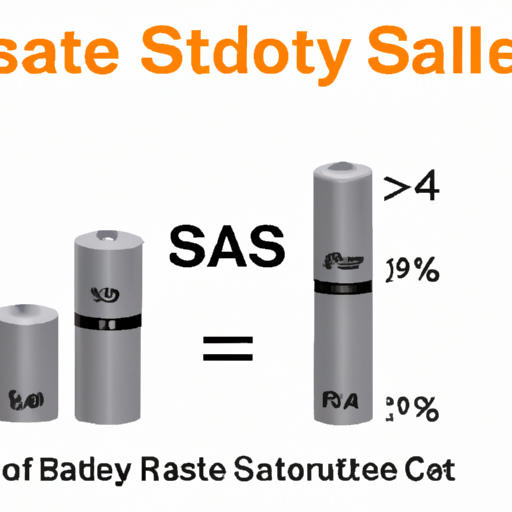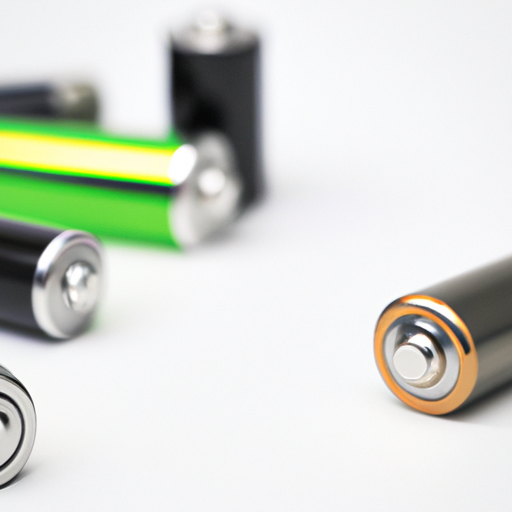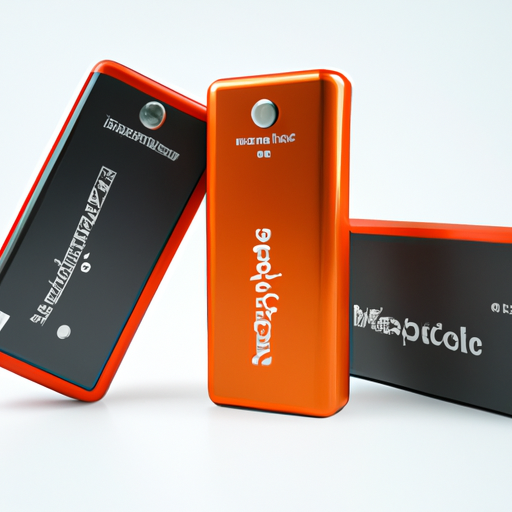
Solid-state batteries are a promising technology that has the potential to revolutionize the energy storage industry. These batteries use solid electrolytes instead of liquid electrolytes, which makes them safer, more energy-dense, and longer-lasting than traditional lithium-ion batteries. As the demand for electric vehicles and renewable energy storage continues to grow, solid-state batteries are becoming increasingly important.One of the key components of a solid-state battery is the solid electrolyte. This component plays a crucial role in the performance and safety of the battery. There are several different types of solid electrolytes that can be used in solid-state batteries, each with its own advantages and disadvantages. In this article, we will discuss some of the most common types of solid electrolytes and provide recommendations for the best class of solid electrolyte for solid-state batteries.1. Polymer electrolytes:
Polymer electrolytes are a type of solid electrolyte that is made from a polymer material. These electrolytes are lightweight, flexible, and easy to manufacture, making them a popular choice for solid-state batteries. Polymer electrolytes also have good ion conductivity, which is essential for the performance of the battery. However, polymer electrolytes can be prone to degradation over time, which can limit the lifespan of the battery.Recommendation: Polymer electrolytes are a good choice for solid-state batteries that require flexibility and ease of manufacturing. They are well-suited for applications where weight and size are important factors. However, it is important to carefully consider the long-term stability and durability of polymer electrolytes when choosing this type of solid electrolyte.2. Ceramic electrolytes:
Ceramic electrolytes are another type of solid electrolyte that is commonly used in solid-state batteries. These electrolytes are made from ceramic materials, such as lithium garnet or sulfides, which have high ion conductivity and thermal stability. Ceramic electrolytes are known for their excellent safety and long cycle life, making them a reliable choice for high-performance solid-state batteries. However, ceramic electrolytes can be brittle and difficult to manufacture, which can increase the cost of the battery.Recommendation: Ceramic electrolytes are ideal for solid-state batteries that require high performance, safety, and long cycle life. They are well-suited for applications where reliability and durability are critical factors. However, it is important to consider the manufacturing challenges and cost implications of using ceramic electrolytes in solid-state batteries.3. Glass electrolytes:
Glass electrolytes are a relatively new type of solid electrolyte that is gaining attention in the solid-state battery industry. These electrolytes are made from glass materials, such as sulfides or oxides, which have good ion conductivity and chemical stability. Glass electrolytes are known for their high energy density and low cost, making them an attractive option for solid-state batteries. However, glass electrolytes can be prone to crystallization and degradation, which can affect the performance of the battery.Recommendation: Glass electrolytes are a promising choice for solid-state batteries that require high energy density and cost-effectiveness. They are well-suited for applications where performance and affordability are important factors. However, it is important to carefully monitor the stability and reliability of glass electrolytes in solid-state batteries to ensure long-term performance.In conclusion, the choice of solid electrolyte for a solid-state battery depends on the specific requirements of the application. Polymer electrolytes are a good choice for flexibility and ease of manufacturing, ceramic electrolytes are ideal for high performance and safety, and glass electrolytes are promising for high energy density and cost-effectiveness. By carefully considering the advantages and disadvantages of each type of solid electrolyte, manufacturers can choose the best class of solid electrolyte for their solid-state batteries. As the technology continues to advance, solid-state batteries have the potential to become the preferred energy storage solution for a wide range of applications.

When it comes to designing and manufacturing batteries, choosing the right components is crucial to ensure optimal performance, reliability, and safety. One key component that plays a significant role in the overall performance of a battery is the battery management system (BMS). In this article, we will discuss the importance of the BMS in battery design and recommend some top-class BMS components that can help enhance the performance and longevity of batteries.The battery management system is a critical component that monitors and controls the charging and discharging of the battery, as well as protects the battery from overcharging, over-discharging, and overheating. It also helps to balance the cells within the battery pack to ensure that each cell is operating at its optimal level. Without a BMS, a battery is at risk of damage, reduced performance, and even safety hazards.When selecting a BMS component for a battery, it is important to consider factors such as the type of battery chemistry, voltage and current requirements, communication protocols, and safety features. Here are some top-class BMS components that are highly recommended for various battery applications:1. Texas Instruments BQ76940: This BMS IC is designed for lithium-ion battery packs and offers high accuracy voltage and current monitoring, cell balancing, and protection features. It also supports communication protocols such as SMBus and I2C, making it suitable for a wide range of battery applications.2. Analog Devices LTC6811: This BMS IC is ideal for high-voltage battery packs and offers multi-cell balancing, voltage and current monitoring, and fault detection features. It also supports daisy-chaining for scalability and communication protocols such as SPI, making it a versatile choice for large battery systems.3. Maxim Integrated MAX14920: This BMS IC is designed for automotive battery packs and offers high accuracy voltage and current monitoring, cell balancing, and fault detection features. It also supports communication protocols such as CAN and LIN, making it suitable for automotive applications.4. Infineon Technologies BMS ICs: Infineon offers a range of BMS ICs for various battery chemistries, including lithium-ion, lead-acid, and nickel-metal hydride. These BMS ICs provide high accuracy monitoring, cell balancing, and protection features, as well as support for communication protocols such as CAN and LIN.5. NXP Semiconductors MC33771: This BMS IC is designed for automotive and industrial battery packs and offers high accuracy voltage and current monitoring, cell balancing, and fault detection features. It also supports communication protocols such as CAN and LIN, making it a reliable choice for demanding applications.In addition to selecting the right BMS component, it is also important to consider other components such as battery cells, connectors, thermal management systems, and enclosure materials to ensure the overall performance and safety of the battery. By choosing top-class components and designing a robust battery system, manufacturers can create batteries that meet the highest standards of performance, reliability, and safety.In conclusion, the battery management system is a critical component in battery design that plays a key role in monitoring and controlling the charging and discharging of the battery, as well as protecting it from damage and safety hazards. By selecting top-class BMS components and designing a robust battery system, manufacturers can ensure optimal performance, longevity, and safety of batteries for various applications.

Apple is known for its high-quality products, and one of the most important components of any Apple device is its battery. Apple offers a range of battery models for its various devices, each designed to provide optimal performance and longevity. In this article, we will explore some of the popular models of Apple batteries and discuss their features and benefits.1. iPhone BatteryThe iPhone is one of Apple's most popular products, and its battery is a crucial component that ensures the device can be used throughout the day without needing to be constantly recharged. Apple offers a range of iPhone batteries, each designed to provide optimal performance and longevity.One of the most popular iPhone battery models is the iPhone X battery, which is designed to provide up to 21 hours of talk time and up to 13 hours of internet use on a single charge. This battery is also equipped with fast charging capabilities, allowing users to quickly recharge their device when needed.Another popular iPhone battery model is the iPhone 11 battery, which is designed to provide up to 17 hours of talk time and up to 10 hours of internet use on a single charge. This battery is also equipped with wireless charging capabilities, allowing users to conveniently charge their device without needing to plug it in.Overall, Apple's iPhone batteries are known for their high performance, long battery life, and fast charging capabilities, making them a popular choice among iPhone users.2. MacBook BatteryThe MacBook is Apple's line of laptops, and its battery is a crucial component that allows users to work on their device for extended periods without needing to be constantly plugged in. Apple offers a range of MacBook batteries, each designed to provide optimal performance and longevity.One of the most popular MacBook battery models is the MacBook Pro battery, which is designed to provide up to 10 hours of battery life on a single charge. This battery is also equipped with fast charging capabilities, allowing users to quickly recharge their device when needed.Another popular MacBook battery model is the MacBook Air battery, which is designed to provide up to 12 hours of battery life on a single charge. This battery is also equipped with power-saving features, allowing users to maximize their battery life by adjusting their device's settings.Overall, Apple's MacBook batteries are known for their high performance, long battery life, and fast charging capabilities, making them a popular choice among MacBook users.3. iPad BatteryThe iPad is Apple's line of tablets, and its battery is a crucial component that allows users to enjoy multimedia content, play games, and work on their device for extended periods without needing to be constantly recharged. Apple offers a range of iPad batteries, each designed to provide optimal performance and longevity.One of the most popular iPad battery models is the iPad Pro battery, which is designed to provide up to 10 hours of battery life on a single charge. This battery is also equipped with fast charging capabilities, allowing users to quickly recharge their device when needed.Another popular iPad battery model is the iPad Air battery, which is designed to provide up to 10 hours of battery life on a single charge. This battery is also equipped with power-saving features, allowing users to maximize their battery life by adjusting their device's settings.Overall, Apple's iPad batteries are known for their high performance, long battery life, and fast charging capabilities, making them a popular choice among iPad users.In conclusion, Apple offers a range of battery models for its various devices, each designed to provide optimal performance and longevity. Whether you are using an iPhone, MacBook, or iPad, you can trust that Apple's batteries will provide you with the power you need to stay connected and productive throughout the day.

Fuel cells are a promising technology that has the potential to revolutionize the way we power our vehicles, homes, and businesses. These devices generate electricity through a chemical reaction between hydrogen and oxygen, producing only water and heat as byproducts. With their high efficiency and low emissions, fuel cells are seen as a key technology in the transition to a more sustainable energy future.However, the widespread adoption of fuel cells faces several challenges, including high costs, limited infrastructure, and regulatory barriers. To overcome these obstacles and promote the growth of the fuel cell market, policymakers around the world have implemented a range of market policies aimed at incentivizing investment, supporting research and development, and expanding the deployment of fuel cell technologies.One of the most common market policies for fuel cells is financial incentives, such as tax credits, grants, and subsidies. These incentives help to offset the high upfront costs of fuel cell systems and make them more competitive with traditional energy sources. In the United States, for example, the federal government offers a 30% investment tax credit for fuel cell systems installed in residential, commercial, and industrial applications. Similarly, many states have their own incentive programs to encourage the adoption of fuel cells, such as rebates for purchasing fuel cell vehicles or grants for installing fuel cell power plants.In addition to financial incentives, policymakers have also implemented regulations and standards to support the development of the fuel cell market. For example, many countries have set renewable energy targets or emissions reduction goals that incentivize the use of clean technologies like fuel cells. In the European Union, member states are required to meet binding targets for renewable energy consumption, which has led to increased investment in fuel cell projects across the region. Similarly, California has implemented a zero-emission vehicle mandate that requires automakers to produce a certain percentage of electric and fuel cell vehicles each year, driving innovation and investment in the transportation sector.Another key market policy for fuel cells is research and development funding. Governments around the world invest in research programs to support the development of fuel cell technologies and drive down costs. For example, the U.S. Department of Energy's Fuel Cell Technologies Office funds research projects to improve the performance and durability of fuel cells, as well as to develop new materials and manufacturing processes. Similarly, the Japanese government has established the New Energy and Industrial Technology Development Organization (NEDO) to support research and development in fuel cells and other clean energy technologies.In addition to financial incentives and research funding, policymakers have also focused on building the necessary infrastructure to support the deployment of fuel cells. This includes investing in hydrogen production, storage, and distribution facilities, as well as developing codes and standards for the safe operation of fuel cell systems. In countries like Japan and Germany, governments have established hydrogen refueling stations to support the growing fleet of fuel cell vehicles on the road. Similarly, the U.S. Department of Energy has funded projects to develop hydrogen infrastructure in key regions, such as California and the Northeast.Overall, market policies play a crucial role in shaping the growth and development of the fuel cell market. By providing financial incentives, supporting research and development, and investing in infrastructure, policymakers can help to overcome the barriers to adoption and accelerate the transition to a more sustainable energy future. With the right policies in place, fuel cells have the potential to play a significant role in reducing greenhouse gas emissions, improving air quality, and enhancing energy security around the world.